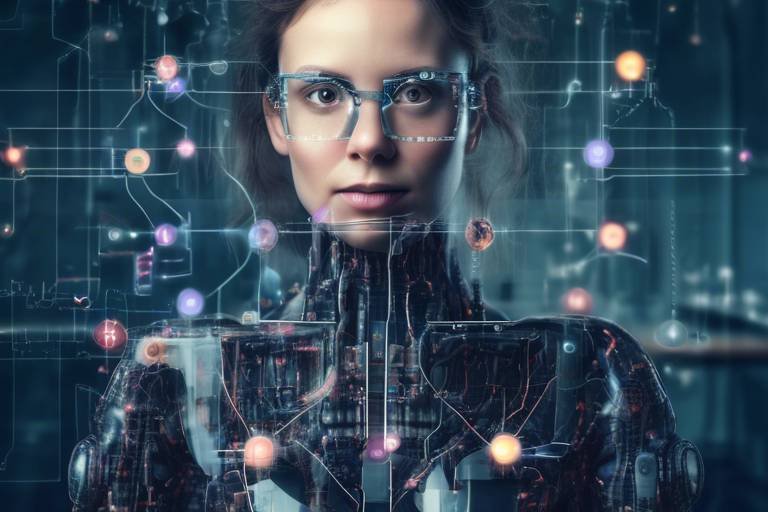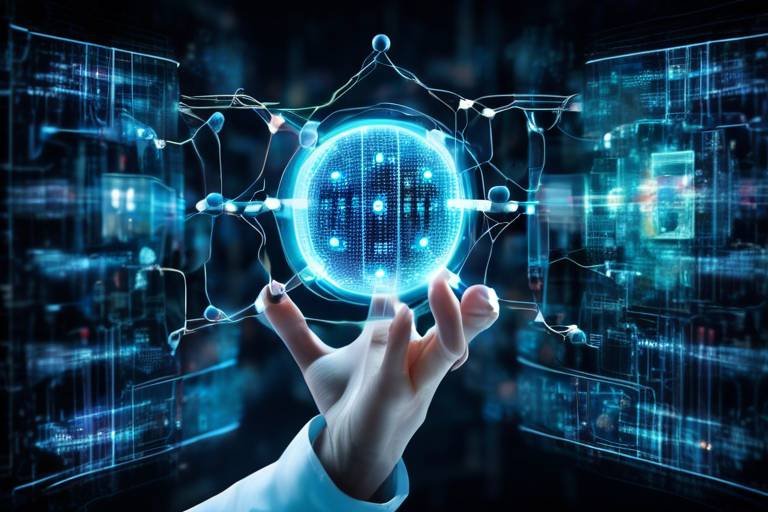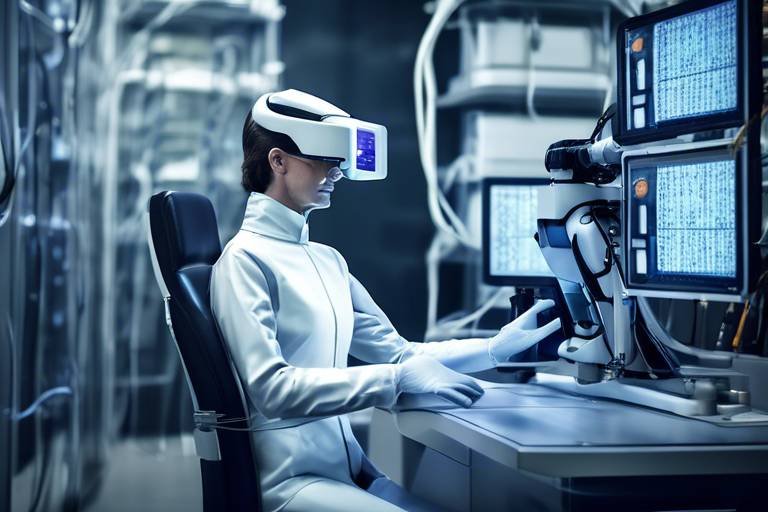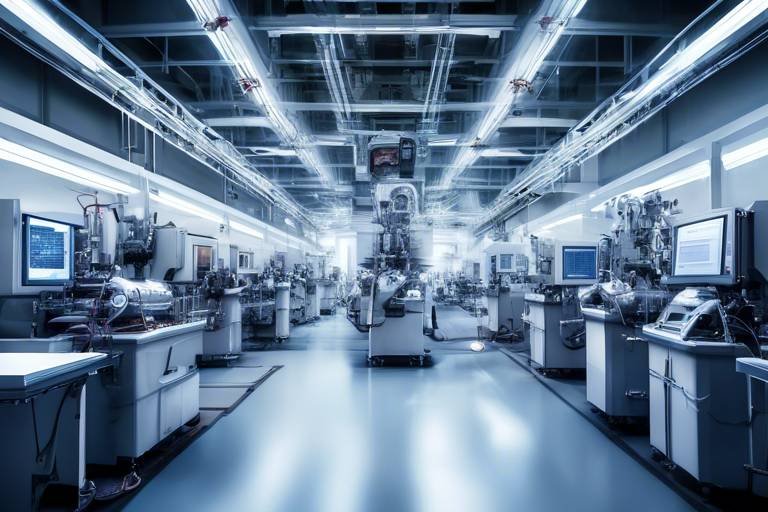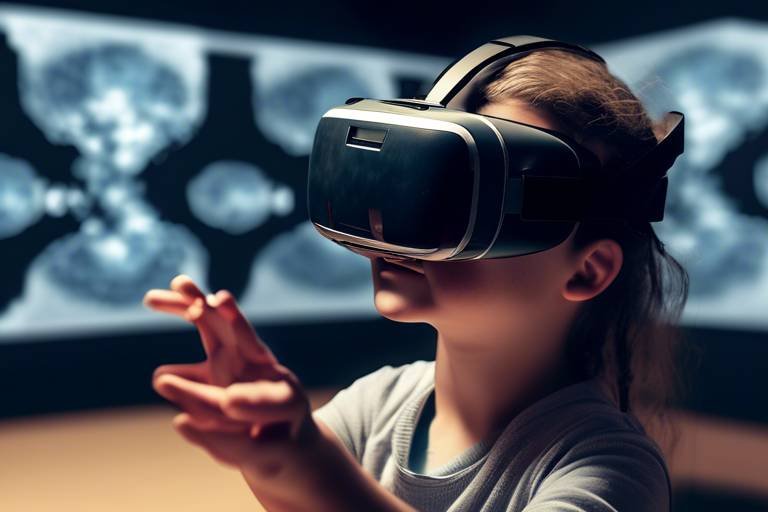The Science of 5G Technology and Its Applications
Welcome to the exciting world of 5G technology! This innovative leap in mobile networks is not just about faster internet speeds; it’s about transforming the way we connect, communicate, and interact with the world around us. Imagine a world where your devices are not just connected, but they communicate in real-time, creating a seamless digital experience. In this article, we will delve into the scientific principles behind 5G, explore its potential applications, and uncover the transformative impact it can have on various industries and our everyday lives.
At its core, 5G technology represents the fifth generation of mobile networks, and it brings with it a plethora of advancements that set it apart from its predecessors. Think of 5G as a high-speed train compared to the slower buses of 4G. It offers significantly faster speeds, lower latency, and the ability to connect a multitude of devices simultaneously. This means that everything from your smartphone to smart home devices will communicate more efficiently. The backbone of 5G technology is built on several key components, including:
- Enhanced Mobile Broadband (eMBB) - This feature focuses on providing high-speed internet access, especially in crowded areas.
- Ultra-Reliable Low Latency Communication (URLLC) - This ensures that critical communications happen without delay, making it perfect for applications like remote surgeries.
- Massive Machine-Type Communications (mMTC) - This allows for a vast number of devices to connect and communicate, paving the way for the Internet of Things (IoT).
So, what makes 5G such a game-changer? Let’s dive deeper into its key features. One of the most significant advancements of 5G is its ability to provide high-speed data transmission with minimal latency. This means that you can download a movie in seconds rather than minutes, and online gaming will feel instantaneous. Imagine playing a game where every move you make is reflected in real-time, creating an immersive experience that feels almost like reality.
To put it simply, 5G is like upgrading from a bicycle to a Ferrari. The improvements in speed and latency are astounding. With speeds reaching up to 10 Gbps, users will experience lightning-fast downloads and uploads. Latency, or the delay before a transfer of data begins following an instruction, is reduced to as low as 1 millisecond. This transformation enhances user experiences and enables new applications that were previously unimaginable.
With these increased speeds, 5G technology can revolutionize streaming services. Imagine watching your favorite shows or movies in 4K resolution without any buffering. The quality of video and audio experiences will skyrocket, allowing for a more engaging and enjoyable viewing experience. Streaming giants will have the opportunity to deliver content that is not only faster but also richer in quality.
For gamers and virtual reality enthusiasts, 5G's low latency is a dream come true. Picture yourself in a virtual world where every action is executed in real-time, enhancing the immersive experience. Online gaming will become more competitive and enjoyable, as players can interact without any lag. Virtual reality applications will also benefit from this technology, allowing for experiences that feel incredibly lifelike.
The architecture of 5G networks differs significantly from previous generations. It utilizes technologies like small cells and beamforming, which are critical for achieving the high speeds and low latency that 5G promises. Small cells are like mini cell towers that help distribute the signal more efficiently, especially in urban environments. Beamforming directs the signal to specific users, rather than broadcasting it in all directions, ensuring a stronger and more reliable connection.
The potential applications of 5G technology are vast and varied, spanning across multiple sectors such as healthcare, transportation, and the development of smart cities. Each of these sectors stands to gain significantly from the advancements that 5G offers. For instance, in healthcare, 5G enables remote surgeries and real-time patient monitoring, revolutionizing the way medical practices operate and improving patient outcomes.
In the medical field, 5G technology is paving the way for innovations that were once considered science fiction. Surgeons can perform operations remotely with the help of high-definition video feeds and real-time data. This not only enhances the accessibility of healthcare but also ensures that patients receive timely treatment, regardless of their location.
5G is a cornerstone for developing smart cities and the Internet of Things (IoT). Imagine a city where traffic lights communicate with vehicles to optimize traffic flow, or where smart sensors monitor air quality and adjust public services accordingly. This connectivity and data exchange among devices will lead to smarter urban environments, improving the quality of life for residents.
Q: What is 5G technology?
A: 5G technology is the fifth generation of mobile networks, offering faster speeds, lower latency, and the ability to connect a vast number of devices simultaneously.
Q: How does 5G impact streaming services?
A: 5G allows for higher-quality video and audio streaming experiences, enabling users to watch content in 4K resolution without buffering.
Q: What are the benefits of 5G in healthcare?
A: 5G technology enhances medical practices by enabling remote surgeries and real-time patient monitoring, leading to improved patient outcomes.
Q: How will 5G affect gaming?
A: 5G's low latency will create a more immersive gaming experience, allowing for real-time interactions and reducing lag during online play.

[Understanding 5G Technology]
5G technology represents a monumental leap in mobile network evolution, standing proudly as the fifth generation of telecommunications. Unlike its predecessors, 5G is not just about faster internet speeds; it’s about creating a **seamless connectivity experience** that transforms how we interact with technology in our daily lives. Imagine a world where your devices communicate with each other in real-time, where delays are virtually non-existent, and where the potential for innovation is limitless. This is the promise of 5G.
At its core, 5G technology is built on a foundation of advanced scientific principles and cutting-edge engineering. It utilizes a combination of **millimeter waves**, **sub-6 GHz frequencies**, and **massive MIMO (Multiple Input Multiple Output)** technology to deliver unparalleled performance. Millimeter waves, for example, allow for high data rates and increased capacity, making it possible to connect a multitude of devices without compromising speed. This is particularly crucial in our increasingly interconnected world, where the Internet of Things (IoT) is becoming a reality.
One of the standout features of 5G is its ability to achieve **lower latency**, which refers to the time it takes for data to travel from one point to another. With 5G, latency can drop to as low as **1 millisecond**, compared to 20-30 milliseconds for 4G networks. This reduction opens the door to a plethora of applications that require real-time feedback, such as autonomous vehicles and remote surgeries. Think about it: a delay of just a few milliseconds can mean the difference between a successful operation and a critical failure.
The architecture of 5G networks is also a game-changer. Unlike the traditional cell tower model, 5G employs a **distributed architecture** that includes small cells, which are low-powered cellular radio access nodes. These small cells are strategically placed to provide better coverage and capacity in densely populated areas. Additionally, **beamforming** technology directs signals to specific users rather than broadcasting them in all directions, enhancing both efficiency and performance. This means that even in crowded environments, your connection remains stable and fast.
In conclusion, understanding 5G technology requires a grasp of its fundamental principles and the groundbreaking innovations that make it possible. As we delve deeper into its features and applications, it becomes clear that 5G is not just a technological upgrade; it is a **transformative force** that will redefine industries and enhance our daily lives in ways we are only beginning to comprehend.
- What is 5G technology? 5G is the fifth generation of mobile networks, designed to provide faster speeds, lower latency, and the ability to connect more devices simultaneously.
- How does 5G improve internet speed? 5G utilizes advanced technologies such as millimeter waves and massive MIMO to deliver significantly higher data rates compared to previous generations.
- What are the main benefits of 5G? The main benefits include enhanced mobile broadband, ultra-reliable low latency communication, and the ability to support a massive number of connected devices.
- How will 5G impact everyday life? 5G will enable advancements in various sectors, including healthcare, transportation, and entertainment, leading to smarter cities and improved user experiences.

[Key Features of 5G]
5G technology is not just a buzzword; it’s a groundbreaking evolution in mobile connectivity that promises to change the way we interact with the world around us. At its core, 5G introduces several key features that set it apart from its predecessors, making it a game-changer for both consumers and industries alike. One of the most significant advancements is the enhanced mobile broadband, which allows for lightning-fast download and upload speeds. Imagine downloading an entire season of your favorite series in mere seconds—this is the reality that 5G brings to the table.
Another remarkable feature of 5G is its ultra-reliable low latency communication. Latency refers to the time it takes for data to travel from one point to another, and with 5G, this time is reduced to a fraction of what it was with 4G. This means that when you click to load a webpage or send a message, the response time is almost instantaneous. For industries like healthcare, this is crucial; think about real-time data transmission during surgeries or remote patient monitoring. The implications are profound and can lead to improved outcomes and efficiencies.
Moreover, 5G supports massive machine-type communications, which is essential for the Internet of Things (IoT). With billions of devices expected to be connected in the coming years, 5G can handle the sheer volume of data traffic that these devices generate. From smart home devices to connected vehicles, this feature enables seamless communication and data exchange across platforms. In fact, according to recent studies, 5G can support up to 1 million devices per square kilometer, a staggering improvement over 4G's limitations.
To summarize, the key features of 5G can be outlined as follows:
- Enhanced Mobile Broadband: Ultra-fast download and upload speeds.
- Ultra-Reliable Low Latency Communication: Near-instantaneous response times.
- Massive Machine-Type Communications: Ability to connect a vast number of devices simultaneously.
These features not only enhance user experiences but also open up new possibilities for innovation across various sectors. Whether it’s transforming how we consume media, interact in gaming, or even manage our health, 5G is poised to redefine our digital landscape.

[Speed and Latency Improvements]
The advent of 5G technology has ushered in a new era of connectivity, characterized by lightning-fast speeds and remarkably low latency. Imagine downloading an entire season of your favorite show in mere seconds or participating in a virtual reality game where every move is reflected in real-time. This isn’t just a dream; it’s the reality that 5G is making possible. Unlike its predecessors, 5G offers data transfer rates that can reach up to 10 Gbps, which is up to 100 times faster than 4G. This dramatic increase in speed transforms how we interact with the digital world, paving the way for innovations that were previously unimaginable.
But speed isn't the only game-changer here. The latency—the time it takes for data to travel from one point to another—has also seen significant improvements. With 5G, latency can drop to as low as 1 millisecond, compared to 30-50 milliseconds with 4G. This near-instantaneous communication opens up a myriad of possibilities, especially in applications that require real-time feedback, such as online gaming, autonomous vehicles, and remote medical procedures. Imagine a surgeon performing a delicate operation from thousands of miles away, with zero lag in communication. This is the kind of future 5G is paving the way for.
To understand the impact of these improvements better, consider the following table that compares the key metrics of 4G and 5G:
| Feature | 4G | 5G |
|---|---|---|
| Maximum Speed | 1 Gbps | 10 Gbps |
| Latency | 30-50 ms | 1 ms |
| Device Connectivity | 2,000 devices/km² | 1 million devices/km² |
As you can see, the leap from 4G to 5G is monumental. This enhancement in speed and latency not only improves user experiences but also enables new applications that can change the fabric of our daily lives. For instance, the gaming industry stands to gain immensely. Gamers can expect smoother graphics and less lag, making online multiplayer experiences more enjoyable. Similarly, streaming services will benefit tremendously; imagine watching 4K videos without buffering, thanks to the increased bandwidth that 5G provides.
In essence, the improvements in speed and latency that 5G technology brings are not just numbers on a chart; they represent a fundamental shift in how we engage with technology. Whether it’s enhancing our leisure activities or enabling critical services, the implications are vast and exciting. Are you ready to embrace this new digital frontier?
- What is 5G technology? 5G is the fifth generation of mobile networks, offering faster speeds and lower latency than previous generations.
- How fast is 5G? 5G can reach speeds up to 10 Gbps, significantly faster than 4G.
- What are the benefits of low latency in 5G? Low latency allows for real-time data transfer, which is crucial for applications like online gaming and remote surgeries.
- Will 5G affect streaming services? Yes, 5G will enhance streaming quality, allowing for higher resolutions and smoother playback.

[Impact on Streaming Services]
Imagine a world where your favorite streaming service delivers movies and shows in crystal-clear quality without any buffering. With the advent of 5G technology, this dream is becoming a reality. The enhanced speeds and reduced latency of 5G networks are set to revolutionize the way we consume media. No longer will you have to wait for that spinning wheel of death to disappear before diving into the latest blockbuster. Instead, 5G can facilitate seamless streaming, allowing users to enjoy uninterrupted content at higher resolutions, such as 4K and even 8K.
One of the most exciting aspects of 5G is its ability to support multiple devices simultaneously without sacrificing performance. Think about it: in a typical household, everyone is streaming something different at the same time. With 5G, this situation is not just manageable; it's optimized. The technology can handle an enormous amount of data traffic, enabling families to binge-watch their favorite series while also enjoying online gaming or video conferencing without any hiccups.
Moreover, 5G will enhance the experience of live streaming events, such as concerts and sports. Imagine attending a live football match where you can stream the action in real-time from multiple angles or even interact with other fans through augmented reality features. This level of engagement is made possible through the ultra-reliable low latency communication that 5G offers. The data transfer is so fast that it feels instantaneous, creating a more immersive experience for viewers.
To put it into perspective, let's look at a comparison of traditional streaming versus 5G-enabled streaming:
| Feature | Traditional Streaming | 5G Streaming |
|---|---|---|
| Loading Time | 5-10 seconds | Instantaneous |
| Video Quality | Up to 1080p | Up to 8K |
| Multiple Streams | Limited | High capacity |
| Latency | 200-300 ms | 1-10 ms |
As you can see, the differences are staggering. The potential for 5G technology to enhance streaming services isn't just about speed; it's about transforming the entire viewing experience. With capabilities like adaptive bitrate streaming, content providers can adjust the quality of the stream dynamically based on the user's network conditions, ensuring that the viewer always receives the best possible experience.
In summary, the impact of 5G on streaming services is profound. It opens the door to higher-quality content, seamless multi-device experiences, and immersive live events. As 5G technology continues to roll out globally, we can expect a significant shift in how we engage with media, making our viewing experiences more enjoyable and interactive than ever before.
- What is 5G technology? 5G is the fifth generation of mobile networks, offering faster speeds and lower latency than its predecessors.
- How will 5G improve streaming services? 5G will enable higher-quality streaming, reduced loading times, and the ability to stream on multiple devices without lag.
- Is 5G available everywhere? 5G networks are still being rolled out, and availability varies by location.
- Will I need new devices for 5G? Yes, to take full advantage of 5G, you'll need a device that supports 5G connectivity.

[Gaming and Virtual Reality]
The advent of 5G technology is akin to opening a treasure chest filled with opportunities for gamers and virtual reality enthusiasts alike. Imagine a world where latency is virtually non-existent, where every action in a game feels instantaneous, and where the boundaries between the virtual and real worlds blur seamlessly. This is not just a dream; it's the promise of 5G connectivity. With its ultra-reliable low latency, 5G is set to transform the gaming landscape, making experiences more immersive and engaging than ever before.
One of the most exciting aspects of 5G for gaming is its ability to support high-definition graphics and complex environments without the lag that has plagued online gaming for years. Gamers will no longer have to deal with frustrating delays between their actions and the game's response. Instead, they can enjoy a fluid gaming experience that feels like they are truly part of the action. Whether you’re battling foes in a fast-paced shooter or exploring vast open worlds in an RPG, the enhanced speed and responsiveness of 5G will elevate your gameplay to new heights.
Moreover, the potential of virtual reality (VR) gaming is limitless with 5G. Traditionally, VR has required powerful hardware to render graphics and maintain smooth interactions. However, with 5G, much of this processing can be offloaded to the cloud. This means that even those without high-end gaming rigs can access top-tier VR experiences. Imagine strapping on a VR headset and diving into a multiplayer game where you can interact with players from around the globe in real-time, all while enjoying stunning graphics and immersive soundscapes.
To illustrate the impact of 5G on gaming and VR, consider the following table that highlights key improvements:
| Feature | 4G Technology | 5G Technology |
|---|---|---|
| Latency | 50-100 ms | 1 ms |
| Download Speed | 10-100 Mbps | 1-10 Gbps |
| Device Connectivity | Up to 2,000 devices/km² | Up to 1 million devices/km² |
As we look to the future, the implications of 5G on gaming and virtual reality are profound. Developers will be able to create more complex and interactive environments, leading to richer narratives and gameplay. Additionally, the rise of cloud gaming platforms will allow players to access high-quality games without the need for expensive hardware. This democratization of gaming will enable more people to participate in the gaming community, breaking down barriers and fostering inclusivity.
In conclusion, 5G technology is not just an incremental upgrade; it’s a game-changer. With its ability to enhance speed, reduce latency, and support a vast number of connected devices, 5G will redefine what is possible in gaming and virtual reality. The future is bright, and as we embrace these advancements, the way we play and interact with digital worlds will never be the same.
- What is the main advantage of 5G for gaming?
5G provides significantly lower latency and higher speeds, allowing for more immersive and responsive gaming experiences. - Can I use VR with 5G?
Absolutely! 5G allows for cloud-based VR experiences, making high-quality virtual reality accessible to more users. - Will 5G improve multiplayer gaming?
Yes, with lower latency and faster data transmission, multiplayer gaming will become smoother and more enjoyable.

[Network Architecture]
When we talk about 5G technology, we can't overlook the innovative network architecture that makes it all possible. Unlike its predecessors, 5G networks are designed to be more efficient, flexible, and capable of handling a massive influx of connected devices. This new architecture incorporates advanced technologies such as small cells and beamforming, which play a crucial role in delivering high-speed connectivity and low latency.
Small cells are miniature base stations that are strategically placed to enhance coverage and capacity in densely populated areas. Imagine them as tiny hubs of connectivity that work together to create a seamless network experience. By deploying small cells, 5G networks can provide better service in urban environments where traditional towers might struggle to keep up with the demand. This approach not only improves the overall user experience but also optimizes the use of available spectrum, making it a win-win situation.
On the other hand, beamforming is a technology that allows the network to focus signals directly toward a user’s device rather than broadcasting them in all directions. Think of it like a spotlight at a concert; instead of illuminating the entire audience, it shines directly on the performer. This targeted approach reduces interference and increases the efficiency of data transmission, ensuring that users receive a strong and stable connection, even in crowded environments.
Furthermore, the architecture of 5G networks is built to support a wide variety of applications, from enhanced mobile broadband to massive IoT deployments. This versatility is vital for industries looking to leverage 5G for innovative solutions. For instance, in a smart city context, the network can connect thousands of devices, including traffic lights, surveillance cameras, and public transport systems, all communicating in real-time to optimize city operations.
Overall, the 5G network architecture is a complex yet fascinating system that incorporates various elements working in harmony to deliver unprecedented connectivity. As we continue to explore the potential of 5G, it’s clear that this architecture is not just about faster speeds; it’s about creating a robust framework that can support the future of technology.
- What are small cells in 5G? Small cells are low-power base stations that help enhance coverage and capacity in specific areas, particularly in urban settings.
- How does beamforming work? Beamforming directs signals toward specific devices, reducing interference and improving connection quality.
- What is the significance of 5G network architecture? The architecture is designed to support a wide range of applications and a high number of connected devices, making it essential for future technological advancements.

[Applications of 5G Technology]
5G technology is not just a buzzword; it is a game-changer that is set to revolutionize various sectors of our lives. Imagine a world where everything is interconnected, where your devices communicate seamlessly and efficiently. This is not a far-off dream but a reality that 5G is making possible. With its lightning-fast speeds and ultra-reliable connectivity, 5G is paving the way for innovations that were previously unimaginable.
One of the most exciting applications of 5G technology can be found in the field of healthcare. The ability to transmit large amounts of data in real-time means that doctors can perform remote surgeries with precision. Imagine a surgeon in one part of the world operating on a patient thousands of miles away, guided by real-time data and high-definition video feeds. This capability not only enhances the reach of medical services but also significantly improves patient outcomes. Furthermore, real-time patient monitoring through wearable devices becomes feasible, allowing healthcare providers to receive instant updates about a patient’s condition, leading to timely interventions.
Another sector where 5G is making waves is transportation. With the rise of autonomous vehicles, the need for constant, reliable communication between vehicles and infrastructure is critical. 5G provides the necessary bandwidth and low latency required for vehicles to share information about traffic conditions, road hazards, and navigation in real time. This connectivity can lead to safer roads and more efficient traffic management, ultimately reducing congestion and pollution in our cities.
Moreover, the concept of smart cities is becoming more tangible with the implementation of 5G technology. Imagine a city where traffic lights adjust in real-time based on traffic flow, where waste management systems notify collectors when bins are full, and where public safety is enhanced through connected surveillance systems. All of these innovations rely on the ability of devices to communicate quickly and reliably, something that 5G excels at. The Internet of Things (IoT) thrives on this connectivity, enabling a network of devices that can work together to create smarter, more efficient urban environments.
To illustrate the transformative potential of 5G across different sectors, here’s a brief overview:
| Sector | Application | Impact |
|---|---|---|
| Healthcare | Remote surgeries, real-time monitoring | Improved patient outcomes, expanded access to care |
| Transportation | Autonomous vehicles, traffic management | Increased safety, reduced congestion |
| Smart Cities | Connected infrastructure, efficient resource management | Enhanced urban living, sustainability |
As we can see, the applications of 5G technology are vast and varied, impacting numerous aspects of our daily lives. From healthcare to transportation and smart cities, 5G is not just about faster internet; it's about creating a more connected, efficient, and intelligent world. The potential is immense, and as this technology continues to evolve, we can only imagine what the future holds.
- What is 5G technology? 5G is the fifth generation of mobile networks, providing faster speeds, lower latency, and enhanced connectivity compared to previous generations.
- How does 5G impact healthcare? 5G enables remote surgeries and real-time patient monitoring, significantly improving medical practices and patient outcomes.
- What are smart cities? Smart cities utilize technologies like 5G to improve urban living through connected infrastructure and efficient resource management.
- Will 5G affect gaming? Yes, 5G's low latency will enhance online gaming experiences and virtual reality applications, making them more immersive.

[Healthcare Innovations]
In the rapidly evolving world of technology, 5G stands out as a game-changer, particularly in the healthcare sector. Imagine a world where doctors can perform surgeries remotely, guided by real-time data and video feeds with crystal-clear precision. This is no longer just a futuristic dream; it’s becoming a reality thanks to the unparalleled capabilities of 5G technology. With its enhanced speed and ultra-reliable low latency, 5G is revolutionizing how healthcare is delivered, making it more efficient, accessible, and effective.
One of the most exciting applications of 5G in healthcare is remote surgeries. Surgeons can operate on patients located miles away, utilizing high-definition video and advanced robotics. This not only expands access to specialized care but also significantly reduces travel time for patients. For instance, a patient in a rural area can receive life-saving surgery from a leading expert in a major city without ever leaving their hometown. This seamless connectivity ensures that patients receive timely interventions that can drastically improve their outcomes.
Furthermore, 5G technology enhances real-time patient monitoring. Imagine a scenario where wearable devices continuously track vital signs and send immediate alerts to healthcare providers if something goes awry. This level of monitoring allows for proactive management of chronic conditions, reducing hospital visits and improving overall health management. With the ability to transmit large volumes of data quickly and reliably, healthcare professionals can make informed decisions faster than ever before, leading to better patient safety and care.
To illustrate the impact of 5G on healthcare, consider the following table that highlights some of the key innovations:
| Innovation | Description | Benefits |
|---|---|---|
| Remote Surgeries | Surgeons performing operations from distant locations using robotic systems. | Increased access to specialists, reduced travel time, and timely interventions. |
| Real-time Monitoring | Wearable devices that track and transmit vital signs continuously. | Proactive management of health conditions and improved patient safety. |
| Telemedicine | Virtual consultations with healthcare providers via high-speed video. | Convenience for patients, reduced waiting times, and expanded access to care. |
Moreover, the integration of 5G in healthcare fosters telemedicine, allowing patients to consult with healthcare providers from the comfort of their homes. This is particularly crucial in today's world, where social distancing has become the norm. With high-speed video connections, patients can receive medical advice, follow-up consultations, and even mental health support without the need for physical visits. This not only saves time but also opens up healthcare access to those who may have barriers to in-person visits, such as mobility issues or geographic isolation.
In conclusion, the innovations brought about by 5G technology in healthcare are nothing short of revolutionary. From remote surgeries to real-time monitoring and telemedicine, the potential to improve patient outcomes and accessibility is immense. As we continue to embrace this technology, we can expect to see a healthcare landscape that is more connected, efficient, and patient-centered than ever before.
- What is 5G technology? 5G is the fifth generation of mobile networks, providing faster speeds, lower latency, and greater connectivity than previous generations.
- How does 5G improve healthcare? 5G enhances healthcare through remote surgeries, real-time monitoring, and telemedicine, allowing for better patient outcomes and accessibility.
- Are there any risks associated with 5G in healthcare? While 5G technology offers numerous benefits, it also raises concerns regarding data security and the need for robust infrastructure.

[Smart Cities and IoT]
As we stand on the brink of a technological revolution, the concept of smart cities is becoming increasingly tangible, thanks in large part to the incredible capabilities of 5G technology. Imagine a city where everything is interconnected, where traffic flows seamlessly, energy consumption is optimized, and public services are enhanced through the power of real-time data. This is not just a dream; it's a reality that 5G is helping to shape.
At the heart of smart cities lies the Internet of Things (IoT). IoT refers to the network of physical devices—ranging from everyday household items to sophisticated industrial tools—that are embedded with sensors, software, and other technologies to connect and exchange data with other devices and systems. With 5G, the potential for IoT expands exponentially. The high-speed connectivity and low latency of 5G mean that devices can communicate with each other almost instantaneously, which is crucial for applications like traffic management and environmental monitoring.
For instance, consider the impact of smart traffic lights that can adjust their timing based on real-time traffic conditions. With 5G, these lights can receive data from vehicles and pedestrians, optimizing traffic flow and reducing congestion. This capability not only enhances the commuting experience but also contributes to lower emissions and improved air quality. Furthermore, smart parking solutions can guide drivers to available spaces, reducing the time spent searching for parking and minimizing traffic jams.
Moreover, 5G technology facilitates the development of smart utilities. Imagine a scenario where your electricity grid can communicate with your home appliances, adjusting energy usage based on peak demand times. This not only helps in reducing energy costs but also in promoting sustainable energy consumption. With the integration of renewable energy sources, smart grids can efficiently manage energy distribution, ensuring that supply meets demand without wastage.
In addition to urban infrastructure, 5G is transforming public safety and emergency response systems. With the capability to transmit large amounts of data swiftly, emergency responders can receive real-time updates about incidents, enabling them to make informed decisions quickly. For example, during a natural disaster, first responders can utilize drones equipped with cameras and sensors to assess damage and deploy resources effectively, all while being connected through a 5G network.
However, the implementation of smart cities is not without challenges. Issues such as data privacy, cybersecurity, and the digital divide need to be addressed to ensure that the benefits of 5G and IoT are accessible to all citizens. As cities evolve into smart ecosystems, it is crucial to involve community stakeholders in the planning and deployment of these technologies, ensuring that they meet the needs of the population while safeguarding their rights.
In conclusion, the marriage of 5G technology and IoT is paving the way for the cities of tomorrow. By leveraging the power of connectivity, we can create urban environments that are not only efficient and sustainable but also enhance the quality of life for all residents. The future is bright for smart cities, and as we continue to innovate, the possibilities are truly limitless.
- What is a smart city?
A smart city uses technology and data to improve the quality of life for its residents by enhancing urban services, reducing costs, and increasing efficiency. - How does 5G benefit IoT?
5G provides faster data transmission and lower latency, which allows IoT devices to communicate in real-time, improving their functionality and effectiveness. - What challenges do smart cities face?
Challenges include data privacy concerns, cybersecurity threats, and ensuring equitable access to technology for all citizens.
Frequently Asked Questions
- What is 5G technology?
5G technology is the fifth generation of mobile networks, designed to provide significantly faster data speeds, lower latency, and greater connectivity compared to its predecessors. It allows for a more efficient exchange of data, enabling various applications across different industries.
- How does 5G improve mobile broadband?
5G enhances mobile broadband by offering higher data rates, which means users can download and stream content much faster than before. This improvement leads to better experiences for activities like video streaming, online gaming, and virtual reality applications.
- What are the key features of 5G?
Key features of 5G include enhanced mobile broadband, ultra-reliable low latency communication, and massive machine-type communications. These features enable new applications in various sectors, from smart cities to healthcare innovations.
- How does 5G impact streaming services?
With 5G's high speeds, streaming services can deliver higher-quality video and audio experiences without buffering. This means users can enjoy seamless streaming of 4K and even 8K content, transforming the way we consume media.
- Can 5G improve online gaming?
Absolutely! 5G's low latency is a game-changer for online gaming, allowing for real-time interactions and smoother gameplay. This means players can enjoy a more immersive experience without lag, making competitive gaming even more thrilling.
- What is the significance of 5G network architecture?
The architecture of 5G networks uses advanced technologies like small cells and beamforming to improve efficiency and coverage. This new setup allows for better handling of high data traffic and supports the growing number of connected devices.
- How is 5G transforming healthcare?
5G technology is revolutionizing healthcare by enabling remote surgeries and real-time patient monitoring. This means doctors can perform procedures from miles away and monitor patients' health through connected devices, improving outcomes and accessibility.
- What role does 5G play in smart cities?
5G is essential for the development of smart cities as it facilitates connectivity among various devices and systems. This leads to improved traffic management, energy efficiency, and enhanced public services, ultimately creating a more sustainable urban environment.


